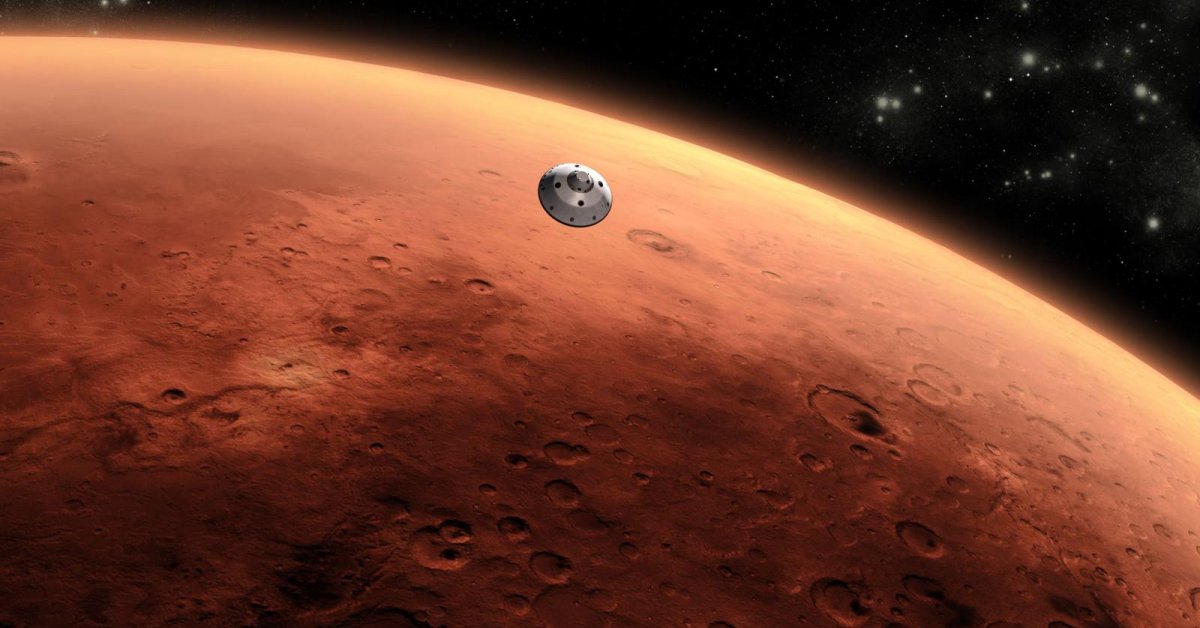NASA's Rover Found A Dried Out Oasis On Mars
Aadhya Khatri - Oct 08, 2019

From the data gathered by the Curiosity rover, we have reasons to believe that the Gale Crater on Mars once had an oasis of shallow pools of saltwater
- Elon Musk Doesn't Buy Luxury Vacation Homes, Here's How He Spends His Money
- The First Helicopter To Fly On Mars Is As Small As A Tennis Ball
- This Fungus From A Nuclear Power Plant Can Protects Astronauts On Mars
Mars of three billion years ago looked really different from what we see today. Ever since our first rover touched down on the planet’s surface, we have been trying to learn more out its distant past.
Scientists are especially interested in the 100-mile Gale Crater, created after an ancient impact took place. From the data gathered by the Curiosity rover of NASA, we have reasons to believe that the crater once had streams that form shallow pools of saltwater.

That was what NASA scientists told us in the new paper on the Nature Geoscience journal. They think that in the past, the crater was just like the Altiplanos, a South America’s region with high altitude, with briny and streams and lakes all over the place.
According to William Rapin, the lead author of the paper, when the climate got drier, the Altiplano lakes gradually dry out. They have no vegetation, making the region looks even more like Mars.
Ever since April, the rover has been experimenting with samples from an area named "the clay-bearing unit" close to a peak in Gale Crater’s center called Mount Sharp. What they found out suggests that the region might have been the bed of a salty lake that has dried up completely for billions of years. Chris Fedo, a team member of Curiosity said that they could not conclude if what they found was the deposit of river or wind, but they could be 100% sure that it was different from what came before.
The reason scientists chose Gale Crater to study is that it preserves a unique record of how Mars has changed. The study can answer the question of when and how Mars climate started to change, which, in turn, can provide us with insight into when and how the planet was able to support life on its surface.
Featured Stories

Review - Apr 03, 2025
Top 5 Budget Cameras For Beginners (2025)

Features - Feb 26, 2025
Elon Musk Eyes Indian Market: Tesla’s Next Big Move?

Features - Aug 03, 2023
The Impact of Social Media on Online Sports Betting

Features - Jul 10, 2023
5 Most Richest Esports Players of All Time

Features - Jun 07, 2023
Is it safe to use a debit card for online gambling?

Features - May 20, 2023
Everything You Need to Know About the Wisconsin Car Bill of Sale

Features - Apr 27, 2023
How to Take Advantage of Guarantee Cashback in Online Bets

Features - Mar 08, 2023
White Label Solutions for Forex

Review - Jul 15, 2022
WHY BETTING SIGNUP OFFERS ARE IMPORTANT FOR NEW GAMBLERS

Mobile - Jul 01, 2022
The Best Sports Video Games to Play in 2022
Read more

Gadgets- Apr 02, 2025
Steam Deck VS ROG Ally, Which is the Better Handheld PC?
For the price, you really can’t beat the Steam Deck. But to get the top graphics, you need to buy the ROG ally.

Review- Apr 03, 2025
GameZone: The Ultimate Platform to Play Tongits Online
This review will explore what makes GameZone the best place to play Tongits online, diving into its standout features, user-friendly design, and the overall experience it provides to players.

Mobile- 8 hours ago
3 Best Budget Gaming Phones In 2025
For a smooth gaming experience, you need good battery life, sufficient cooling, a high refresh rate, and more depending on which games you enjoy.

Review- Apr 03, 2025
Top 5 Budget Cameras For Beginners (2025)
These are our top calls based on price and functions.
0 Comments
Sort by Newest | Popular